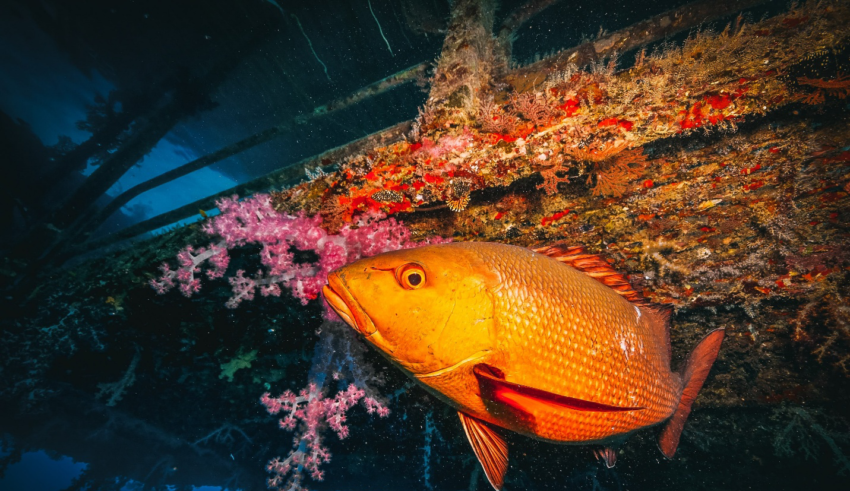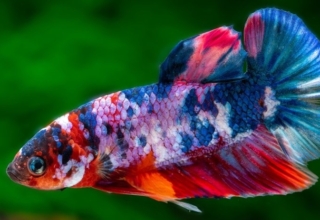
Overfishing has emerged as one of the most critical threats to marine biodiversity. The relentless extraction of fish from the world’s oceans far beyond sustainable levels is causing profound ecological imbalances. Species once considered abundant are now dwindling in number, pushing them closer to the brink of extinction. This blog highlights the top seven fish species that are critically threatened by overfishing, highlighting the urgency for global conservation efforts and sustainable fishing practices.
Table of Contents
Understanding Overfishing and Its Consequences
Overfishing occurs when fish are caught at a faster rate than they can reproduce and replenish. While it may seem like an economic gain in the short term, overfishing in the ocean leads to long-term ecological damage, disrupts food chains, and affects the livelihoods of millions who depend on marine resources. As the demand for seafood continues to rise globally, especially in developed countries, fisheries are under immense pressure to deliver. Consequently, many fish populations have collapsed or are at risk of collapse.
Let us explore seven fish species that are at the forefront of this crisis.
1. Atlantic Bluefin Tuna (Thunnus thynnus)
The Atlantic Bluefin Tuna is perhaps the most iconic example of a species threatened by overfishing. Prized for its rich, flavorful meat, particularly in sushi and sashimi, this species has faced decades of intense commercial exploitation. Capable of growing up to 1,500 pounds and migrating across oceans, the Bluefin Tuna’s biological traits make it highly susceptible to overfishing. According to the International Union for Conservation of Nature (IUCN), the Atlantic Bluefin Tuna is classified as “Endangered.” Overfishing in the ocean, particularly in the Atlantic and Mediterranean, has led to significant population declines. Although recent efforts like fishing quotas and marine conservation zones have shown promise, illegal and unregulated fishing continues to pose a significant threat.
2. Orange Roughy (Hoplostethus atlanticus)
Often marketed as a delicacy, the Orange Roughy has a long lifespan up to 150 years and matures slowly, making it highly vulnerable to overfishing. Native to deep-sea habitats, this fish is especially targeted by trawlers, which often destroy the fragile ecosystems where they reside. Due to its slow reproduction rate, once Orange Roughy populations are depleted, recovery takes decades, if not longer. Countries like New Zealand have implemented some protective measures, but global demand still encourages unsustainable harvesting in many regions. Overfishing in the ocean’s deep-sea zones is one of the most alarming and least understood threats to this and many other slow-growing species.
3. Patagonian Toothfish (Dissostichus eleginoides)
Also known as “Chilean Sea Bass,” the Patagonian Toothfish is another deep-sea species that has suffered due to its popularity in fine dining. Found in the cold Southern Ocean, this fish is highly sought after for its buttery texture and rich flavor. Illegal, unreported, and unregulated (IUU) fishing has been a significant problem for this species. Although some fisheries have earned Marine Stewardship Council (MSC) certification, illegal fishing operations continue to exploit the species, particularly in international waters. Conservation efforts include satellite monitoring and stricter trade regulations, but the threat remains very real.
4. Sharks (Various Species)
Sharks, although not traditionally thought of as target fish species, are among the most heavily impacted by overfishing. They are often caught intentionally for their fins (for shark fin soup) or as bycatch in tuna and swordfish fisheries. Sharks are apex predators and play a crucial role in maintaining the balance of marine ecosystems. Their slow reproduction rates and long gestation periods make them particularly vulnerable to overfishing in the ocean. The global push for shark fin bans and protected marine areas is growing, but enforcement remains inconsistent.
5. European Eel (Anguilla anguilla)
The European Eel has a fascinating life cycle, migrating thousands of kilometers from European rivers to the Sargasso Sea to spawn. Unfortunately, it has become critically endangered due to overfishing, pollution, habitat loss, and barriers like dams which obstruct its migratory path. Despite declining numbers, demand for eel in East Asian cuisine has spurred illegal exports and poaching. Efforts by the European Union to ban or restrict eel exports have helped somewhat, but smuggling and lax enforcement in certain regions continue to hinder conservation.
6. Grouper (Various Species)
Groupers are a family of reef fish that are prized for their firm flesh and mild flavor. Species such as the Nassau Grouper and Goliath Grouper have faced massive declines across the Caribbean and the Gulf of Mexico. These fish are particularly susceptible to overfishing because they aggregate in large numbers to spawn, making them easy targets for fishers. The IUCN has listed several grouper species as endangered or critically endangered. Coral reef degradation, often caused by climate change and pollution, further exacerbates their vulnerability. Community-based marine reserves and seasonal fishing bans are some of the few measures helping to protect these species, though challenges remain.
7. Pacific Bluefin Tuna (Thunnus orientalis)
Like it’s Atlantic counterpart, the Pacific Bluefin Tuna is highly prized in global seafood markets. Despite its wide distribution across the Pacific Ocean, overfishing has drastically reduced its population with some estimates of its historic levels. Efforts are underway through regional fisheries management organizations to rebuild stocks, including implementing catch limits and stricter quotas. Still, enforcement issues and continued high market demand, particularly in Japan, remain major obstacles. Overfishing in the ocean continues to push this valuable species to the edge, despite growing international awareness.
Why Overfishing Persists
The root causes of overfishing are multifaceted. They include:
- Economic incentives: Fishers, often under pressure to meet quotas or satisfy market demands, may prioritize short-term gains over long-term sustainability.
- Weak regulations: Many countries lack the capacity or political will to enforce sustainable fishing practices.
- Illegal and unregulated fishing: A shadow economy of fisheries continues to thrive, undermining global conservation efforts.
- Bycatch: Non-target species are often caught unintentionally and discarded, contributing to overall mortality.
Addressing overfishing in the ocean requires global cooperation, stricter enforcement, and widespread public awareness.
Sustainable Solutions to Combat Overfishing
The good news is that solutions exist and many are already being implemented with measurable success. Some effective approaches include:
- Marine Protected Areas (MPAs): These zones restrict or ban fishing, allowing ecosystems to recover naturally.
- Catch Shares and Quotas: These allocate specific portions of the allowable catch to fishers, encouraging responsible practices.
- Eco-labeling and Certifications: Programs like the Marine Stewardship Council (MSC) help consumers make informed decisions by identifying sustainably sourced seafood.
- Community-based management: Involving local communities in managing fisheries can lead to more effective and culturally appropriate solutions.
- Technological interventions: Tools like satellite tracking and electronic monitoring help reduce illegal fishing and improve accountability.
Consumers also play a crucial role. By choosing sustainable seafood options, supporting transparent supply chains, and advocating for responsible policies, individuals can help reduce overfishing in the ocean and promote healthier marine ecosystems.
Final Thoughts
The problem of overfishing is not merely an environmental concern, it is a global crisis that affects economies, food security, and cultural traditions. The seven species highlighted in this blog are just a few among hundreds that are currently at risk due to unsustainable fishing practices. Many of these species could recover if given a chance, but time is of the essence. As the global population grows and the demand for seafood increases, the need for sustainable solutions becomes more urgent than ever. Tackling overfishing in the ocean requires not just regulations and scientific innovation, but also a fundamental shift in how we value and interact with marine life.
By protecting vulnerable fish species today, we safeguard not only the future of our oceans but also the wellbeing of generations to come.














